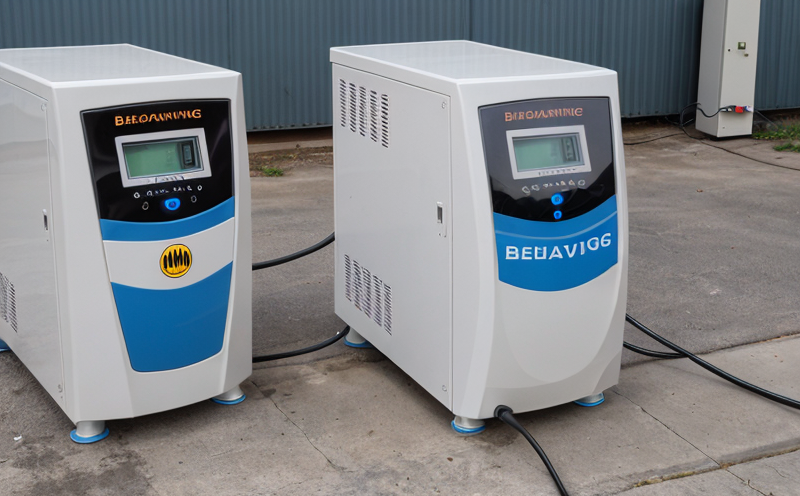EN 62133 Charging and Discharging Behavior Testing of Portable Rechargeable Batteries
The CENELEC standard EN 62133 specifies the requirements, test methods, and acceptance criteria for portable rechargeable batteries. This service focuses on the charging and discharging behavior testing as per this standard, which is crucial for ensuring battery safety, performance, and reliability in consumer electronics.
The charging and discharging behavior of a battery can significantly influence its lifespan, efficiency, and overall performance. This test ensures that the battery can be safely recharged to full capacity without compromising its integrity or causing damage. The standard covers various aspects including charging protocols, discharge rates, temperature ranges, and safety mechanisms.
The testing process involves subjecting batteries to a controlled environment where they undergo multiple charge and discharge cycles under specified conditions. This includes high-temperature stress tests, overcharge scenarios, and deep-discharge conditions, all of which are designed to simulate real-world usage. The goal is to identify any potential weaknesses or issues that could lead to battery failure or safety hazards.
For accurate testing, the laboratory uses advanced equipment such as programmable charge/discharge testers capable of simulating different charging profiles and discharge behaviors. These instruments provide precise control over voltage, current, temperature, and time parameters, allowing for a comprehensive evaluation of each battery's performance under various conditions.
The results from these tests are then analyzed against the acceptance criteria outlined in EN 62133 to determine if the batteries meet the required standards. If any discrepancies are found, further investigation or adjustments may be necessary before certification can be granted. Compliance with this standard not only ensures safety but also enhances brand reputation by demonstrating a commitment to quality and reliability.
The importance of such testing cannot be overstated in today’s rapidly evolving market where portable devices play an integral role in our daily lives. By adhering to these stringent protocols, manufacturers can build trust among consumers while ensuring their products meet regulatory requirements worldwide.
Our team of experts ensures that every step of the process adheres strictly to EN 62133 guidelines, providing reliable data and insights into your product's performance. Whether you're developing new models or simply need assurance about existing ones, our charging and discharging behavior testing service offers peace of mind knowing that your batteries are up to par with global standards.
Scope and Methodology
The scope of EN 62133 covers a wide range of portable rechargeable batteries used in various consumer electronics devices. This service focuses specifically on the charging and discharging behavior testing aspect, which is critical for assessing battery performance during these processes.
The methodology involves subjecting batteries to controlled environments that simulate real-world conditions they might encounter throughout their lifecycle. For instance, high-temperature stress tests help determine how well a battery holds up under extreme heat, while overcharge scenarios ensure it doesn't become unstable or hazardous when pushed beyond its limits.
| Test Parameter | Description |
|---|---|
| Charging Profile | Controlled voltage, current, temperature, and time parameters to simulate different charging scenarios. |
| Discharge Rate | Determines the rate at which a battery discharges over a given period under specified conditions. |
| Temperature Range | Tests how batteries perform within specified temperature limits, typically between -20°C to +65°C. |
| Safety Mechanisms | Evaluates the effectiveness of built-in protection features designed to prevent overcharging or deep-discharge damage. |
The results from these tests are analyzed against the acceptance criteria specified in EN 62133. If any issues arise, they must be addressed before final certification can be issued. Compliance with this standard guarantees both safety and reliability for end-users.
Competitive Advantage and Market Impact
Complying with EN 62133 not only ensures your product's safety but also provides significant competitive advantages in today’s highly regulated market. By demonstrating adherence to international standards, you signal to consumers that your batteries are safe, reliable, and of high quality.
In an increasingly connected world where technology plays a key role in daily operations, trust is paramount. Meeting these stringent requirements builds confidence among potential customers who appreciate knowing their devices are built with safety as a top priority. This can translate into increased market share and customer loyalty.
Furthermore, compliance with EN 62133 aligns your product development efforts with global regulatory frameworks, reducing the risk of non-compliance penalties or recalls down the line. It shows that you are proactive in addressing industry trends and standards, positioning yourself as a leader in innovation within this space.
The market impact extends beyond mere compliance; it reflects broader societal expectations regarding responsible manufacturing practices. As sustainability becomes more important to consumers globally, aligning your testing procedures with these recognized international guidelines positions your company favorably amidst growing concerns about environmental responsibility and ethical sourcing.
Use Cases and Application Examples
The results of EN 62133 charging and discharging behavior tests have numerous applications across various industries. Here are some key use cases:





